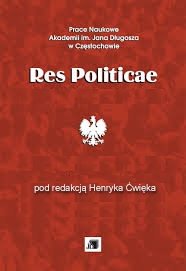Wybrane aspekty funkcjonowania Połączonego Systemu Ewidencji Danych o Przeciwniku (PSED) w latach 1977–1990
Selected aspects of the functioning of the Interlinked System for Recognising Enemies (SOUD) in the years 1977 to 1990
Author(s): Dariusz GregorczykSubject(s): Politics / Political Sciences, Security and defense, Geopolitics
Published by: Uniwersytet Jana Długosza w Częstochowie
Keywords: KGB; Interlinked System for Recognising Enemies (SOUD); Working Apparatus; operating records; cooperation of communist countries’ secret services; functioning of the system for operating records
Summary/Abstract: The Interlinked System for Recognising Enemies (SOUD) was established at the beginning of 1977at the initiative of the First Chief Directorate of the Committee for State Security – KGB (foreign espionage). By virtue of a secret Agreementof communist countries’ representatives, the secret services of Bulgaria, Czechoslovakia, Cuba, Mongolia, the GDR, the Polish People’s Republic, the USSR and Hungary became the users of the system.The purpose of SOUD was to gather, process and transfer information aquired by the operating units of the secret services of countries locatedin the Soviet sphere of influence. The algorithmfor recording the intelligence was designed by the operations command – the so called „Working Appa-ratus” - functioning within the Soviet intelligence system. The information aquired by the secret services of all the Agreement’s members was entered into both a traditional system of paper card files and intothe computerised databaseinstalled in the Moscow headquaters of the Committee for State Security (KGB).The roles and tasks performed within the systemwere strictly in line with the interests of the intelligence and counterintelligence divisions in the countries of the Eastern bloc – primarily the KGB’s operating units. The Interlinked System for Recognising Enemiesceased to function at the turn of 1989 and 1990 due to the political and social changes taking place in Central and Eastern European countries.
Journal: Res Politicae
- Issue Year: 7/2015
- Issue No: 1
- Page Range: 11-25
- Page Count: 15
- Language: Polish

